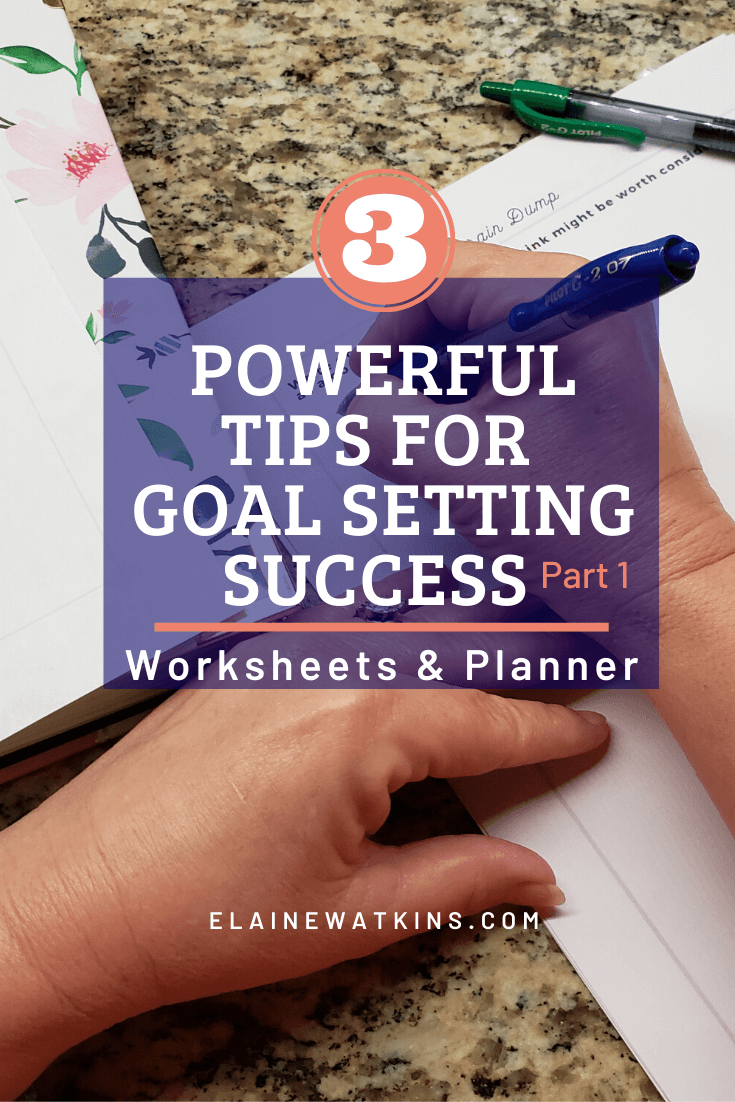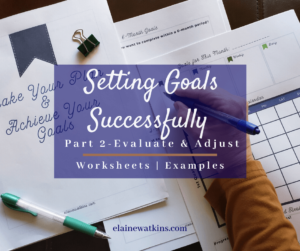3 Powerful Tips for Goal Setting Success Part 1
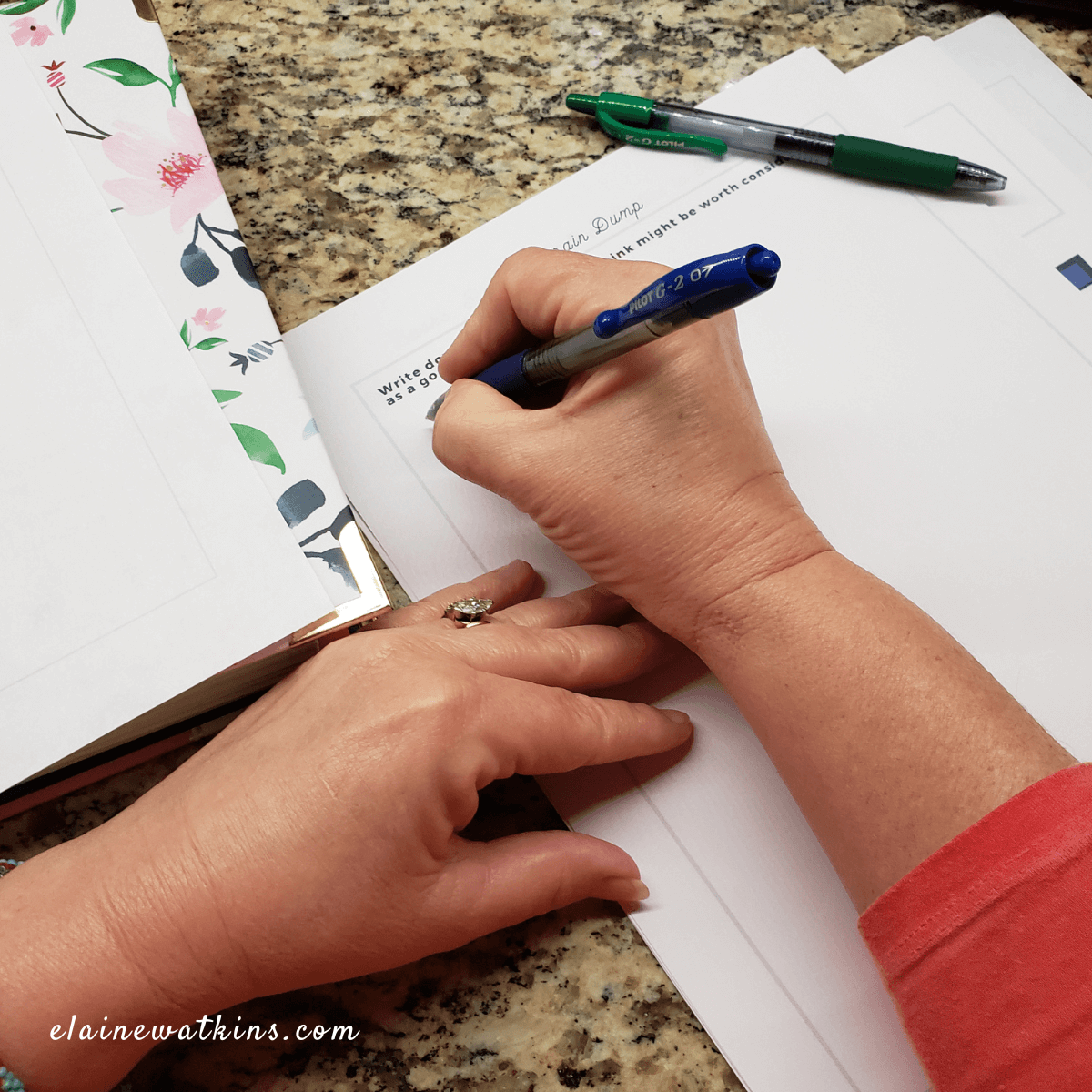
Setting strategic goals, tracking progress, and then acknowledging and celebrating when you reach your goals are the 3 powerful tips for goal setting success that are just so important if you want to get things done.
So this is the first in a series where we’ll be breaking down each of these, to shine light on how we can each develop our own unique plan to successfully set goals and achieve goals successfully.
#1 Of Our Tips for Goal Setting Success – Set Strategic Goals
Lots and lots of people are setting goals all the time, particularly at the beginning of the new year or a new school year.
But look a month later, and you’ll see a lot of those people dumping their goals in the trash bin.
Because so many times, many really don’t take the time to think about:
- what they were setting as goals and why
- how the process would effect their life and others’
- how they were going to do it
- what they would do when they hit an obstacle
We each have a unique collection of circumstances, knowledge and abilities, strengths, and challenges, so definitely consider goal strategies that:
- work with your strengths
- teach you in areas you would like to grow
- build on and support other goals
Start with a Brain Dump!
Whether you do it all year long or at a time when you’re setting new goals, take time to write down ideas you might want to consider at a later date that might end up nicely fitting into a goal strategy.
It might be to take a cooking class that will help you learn how to eat healthy meals. Or what about visiting the open crochet group gatherings of the local crafters store. You might find out about a dance exercise group in your area that sounds interesting. Or maybe you want to challenge yourself to read and complete one book each month to start working through your growing collection.
Of course you might not really want to write down Every idea.
Write down the ones you think might really be worth your time, and then consider them later, when you have time. Decide how important and effective it might be, and then include it or not.
If you’re ready to get started, DON’T MISS THE WORKSHEETS FOR GOAL SETTING. You can just click on the image here and tell me where to send it: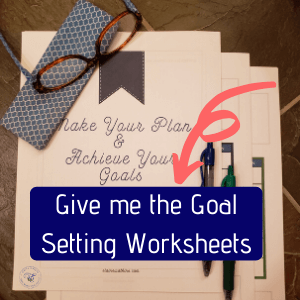
Keep Track of Resources
You know. I guess I’m including tips within each of my tips for goal setting success.
Anyway.
You know how you’ll be enjoying a great conversation with a friend or hear read about a new resource in your area, and you want to remember it for later when you actually have time to consider it?
Write it down!
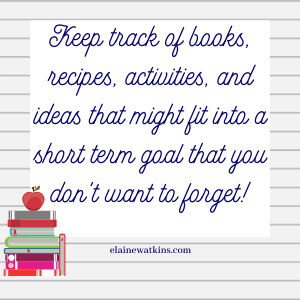
Since I take my planner with me everywhere, I track this kind of information there. And I usually try to write down this kind of information on my daily page when I hear about something.
But you could just as easily track the resources, books, and activities on a Notes app on your phone or use the page I’ve included in the worksheets.
Whatever you decide, when the time comes around where you like to set goals and make plans, simply head over to your chosen information collecting tool and consider what’s there.
Oftentimes many of these will become part of a goal like:
- a book about strengthening your marriage collected into a reading list when setting a reading goal for the year or strategically improving my knowledge or ability in a particular area
- laid out into a distribution of area events and special activities that could become activity for dates with the husband or family outings
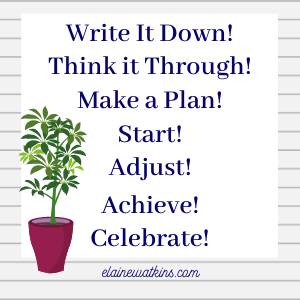
Lay Out Your Goals
Now that you’ve got your completed resource list and brain dump, it’s time to start setting goals.
You’ll first want to determine long term goals, and then develop short term goals that break down the long term goals into smaller portions.
Some might have general hope-type goals like:
- to be healthy and active at retirement
- complete a marathon before they die
- nurture friendships
- serve in my community
- losing excess weight
- reading more
- lowering their stress
- expand my ability to crochet
I know I have many of those. I also know that:
- many of my hope-type goals are similar
- experts usually suggest 3-8 goals at a time (depending upon the “expert”)
- I do better when I can somehow set myself up to experience the satisfaction of achieving something specific
So knowing these, I try to reframe and even reword my goals in ways that might accomplish more than one of those hope-goals such as:
-
- exercise 3 times per week for at least 30 minutes a day
- something I can easily check off daily/weekly on my planner for immediate recognition of my achievement + tracked accomplish
- potentially attends to losing weight, being healthy and active at retirement, and possibly a start towards that marathon
- start a monthly craft time at my home and invite friends to learn, share ideas, and work on donation projects while visiting
- something I can schedule with a low level of added work and feel like I’ve accomplished something every time one is done And when donations are completed and dropped off
- potentially attends to serving in my community, time with friends, and improving my crochet skills
- exercise 3 times per week for at least 30 minutes a day
Also, on those types of goals that aren’t really tangible, I often try to tie them to something that is tangible, like starting that monthly craft time to deliberately spend time with friends.
Long Term Goals
So what are long term goals?
A long-term goal is a well thought out idea as to where you would like to be or what you would like to have achieved by a distant end period, whether it’s 6 months, 1 year, or maybe 5 years. Some people even do 10 year goals.
It can be helpful to be specific, if possible, and a few examples I can set a specific goal might be to:
- consistently enjoying monthly dates with your spouse in 6 months
- be enjoying whole food meals prepared at home and 1 meal out per month in 6 months
- consistently getting to bed by 10 p.m. every night and sleeping for 7+ hours each night within 12 months
These are examples of long term goals that are specific enough for you to determine short term goals that can get you to those goals.
So take some time to really think about where you would like to be by the end of 6 months or a year, for example. Then prayerfully determine specific long-term goals that represent where you would like to be.
Then build smaller, short-term goals that act as mini-challenges to progressively move you towards those long term goals.
So instead of wanting to lose weight, set a long term goal to reach and stabilize to live within the weight recommendations for you.
While making the decision to start exercising is great, decide to begin exercising 3 times a week for 20-30 minutes each for the next 12 months.
When Building Specific Long Term Goals
And also…what does that “eating healthy” actually mean? With just a little more specificity, this general idea becomes a real target you can aim for and legitimately know when you’ve succeeded.
You’ll probably want to consider setting long-term goals in different areas of your life, and there are so many ways to do that.
There are so many ways to sort and prioritize, but I usually like to have a few big categories for long term goals such as: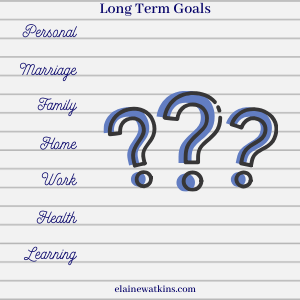
Take your time to just think about it when you’re doing this. Ask yourself questions like:
- Where do I want my ___________ to be in ____ year? (like health/1 year, marriage/6 months, etc.)
- What do I want to __________ in _____ year? (like learn/1 year, complete/2 years, eliminate/1 year, etc.)
- What do I want to be able to do in _____ year? (like run a 5K/1 year, play the piano/1 year, etc.)
- What would I like to begin, change or replace in _____ year? (like beginning monthly dates with your spouse, changing family and free time by more tightly managing what gets on the schedule, replacing McDonalds meals with healthy packed lunches, etc.)
Short Term Goals
With long term goals in place, now you can:
- divide those big goals into smaller portions (short term goals) that would get you to your long term in your decided time allotted
- consider the time, space, and resources needed to get the short term goals completed
- what ideas from your earlier Brain Dump would plug into your short term goals
- consider who will be affected and discussing joining or supporting you
- plug in any books, activities, and other resources from the the list you’ve been gathering
Throughout all of these steps and after, you’ll probably find that you need to make changes. Whether its extending a long term goal, dropping an expensive class, or rearranging the order of completing certain steps, expect to make adjustments.
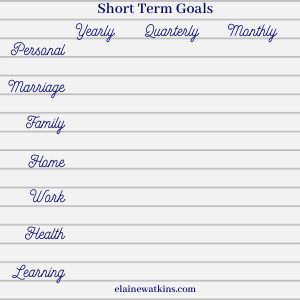
There’s so many ways to break up short term goals. Monthly? Quarterly? Weekly? First day of every month? What about every day in the month of June or the second 1/2 of the year?
Whatever you decide, now is the time to start breaking up those long-term goals into more manageable bits, writing them down, in preparation to take action:
- What from your Brain Dump list might fit nicely as a short term goal? And if it fits, when would be the best time to place it? Wouldn’t want to take a water aerobics class during a quarter that’s usually blizzard weather.
- Is there a resource or activity that falls during a certain time of year and/or fits into a specific stage of learning for your goal?
What’s Next in Tips for Goal Setting Success?
There’s a lot going on in this Part 1 of my series about tips for goal setting success.
But who wants to waste time on goals that won’t really fit you, your needs, your dreams, where you are right now, or where you want to be in the future.
As I said earlier, I’ve built worksheets, planner pages, and calendars that should help you throughout your goal setting process. Whether you use some or all of it, be sure to click on the image here and tell me where to send it, in case it might help you:
Next, work on that list of books and resources and activities.
After a few days, you might want to come back to these, just in case you’ve thought of something else.
Then when you’re ready, start working on those long term goals, and as you work on these and then short-term goals, you might find that some are closely related or even intertwined, or maybe you need to do a little adjusting.
Be sure to check out Parts 2 and 3 in this goal setting series:
